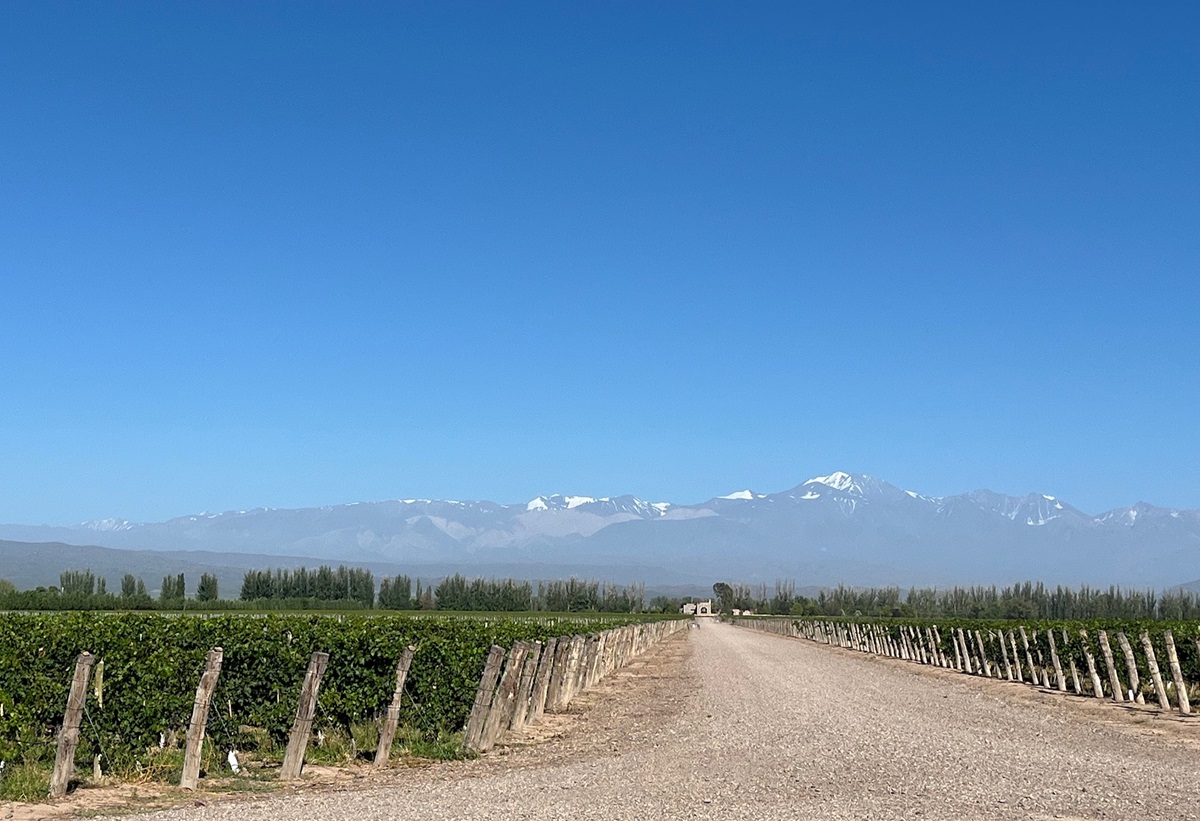LOESS SOIL FOR VITICULTURE
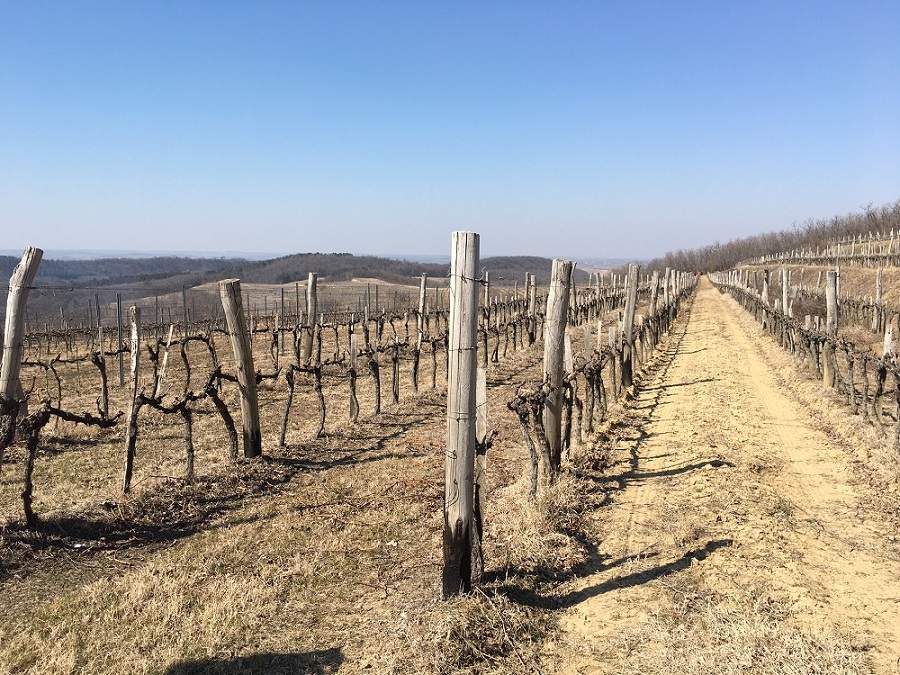
By Rose Murray Brown MW Published in The Scotsman 18 February 2023
What do the vineyards of Wagram in Austria, Walla Walla in eastern Washington State and Szekszard region in southern Hungary have in common? They all share the same special soil type which creates floral fruit-forward whites and soft succulent approachable reds.
The soil is ‘loess’ (pronounced luss), which means ‘loose’. It is basically fine gritty crumbly loose-structured unstratified windblown clay and silt particles cemented by a little clay and lime. It is mostly created by wind, but also formed by glaciers grinding rocks to fine powder. Loess covers 10% of the earth’s surface across all continents, but is in particular concentrations in certain wine regions where you can find dramatic loess banks and terraces up to 50 metres high.
“Loess is so under-rated”, explained winemaker Zoltan Heimann of Heimann & Fiai winery as we walked through the spectacular buff-coloured loess gullies in Hungary’s Szekszard region (pictured below). “It retains heat and is porous and permeable – so is great for root penetration and full of nutrients giving minerality to the wine”.
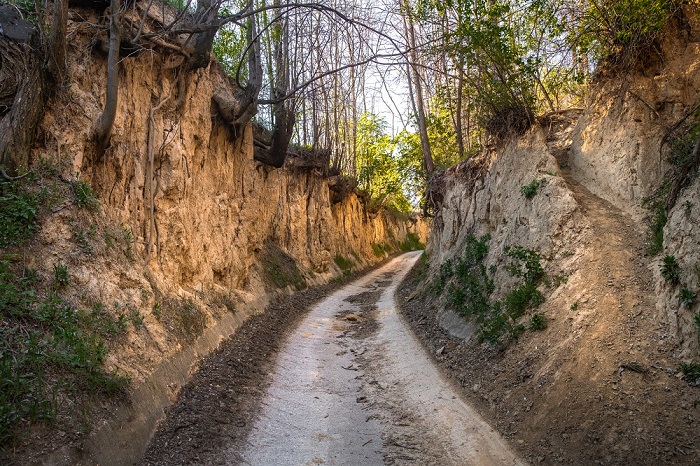
“Loess gives freshness, soft tannins and a bright fruit character to our wine”, confirmed Peter Vida of Vida Csaladi winery. Szekszard region, one of Hungary’s secret gems, is known for its smooth rounded elegant reds from Kadarka and Kekfrankos grapes as well as Kekfrankos-based Bikaver (Bulls Blood) blends which derive from loess soils from the last glacial period.
“We recently launched a Cabernet Sauvignon, Cabernet Franc, Kekfrankos, Merlot and Syrah blend – labelling it simply ‘Losz’ to highlight our region’s distinctive terroir”, says Vida.
Tokaj in north-east Hungary, known for thrilling dry and sweet white wines, is a region famous for loess top soil. Tokaj’s loess is part of the periglacial loess developed in the Pleistocene epoch, deposited across an area stretching from Ukraine to England. Southern Tokaj’s Szarvas vineyard near Tarcal village is known for its loess soil – here with a lower lime content than other loess soils, which are loosely cemented by calcium carbonate.
In Austria the main area is Wagram with 1000 hectares of loess vineyards, almost half of its region is covered in windblown loess both north and south of the Danube. Loess is also found further west on Danube’s northern banks in Kremstal and Wachau and in its tributary Kamptal. Loess is much prized in Austria by winemakers for producing Gruner Veltliner with extract, rich fruits and plenty of weight and body.
In Germany, home to C19 scientist Professor Leonhard who named this soil type ‘loss’ (the German word for loose) in 1821. Loess deposits are found in Nahe, Pfalz, Rheingau and Baden wine regions offering fruit-forward styles of Riesling and Pinot Gris.
In the US loess is a distinctive part of eastern Washington State’s Walla Walla region – home to superb lush-textured richly-fruited Cabernet Sauvignon and Syrah. In fact the greatest loess deposits in the States are in the productive agriculture area on the Mississippi river in western Iowa where loess banks reach 90 metres – now a burgeoning wine area with a new wine AVA called Loess Hills District.
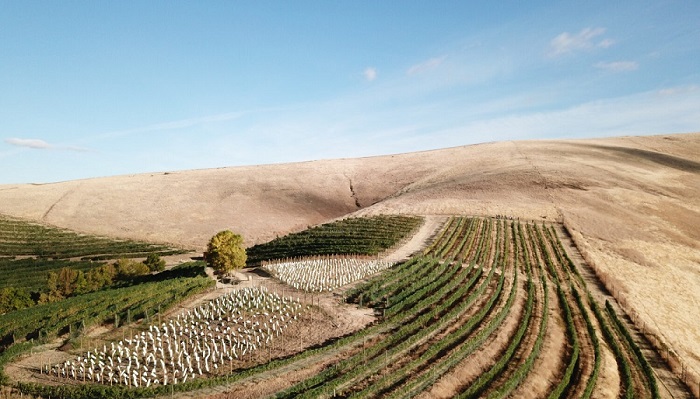
DCIM100MEDIADJI_0477.JPG
Loess deposits are also found in New Zealand, in Hawkes Bay in North Island and Marlborough, Canterbury and Central Otago regions of South Island. Here winegrowers are choosing loess as the soil base for experimenting with their first plantings of Gruner Veltliner.
Shanxi wine region in northern China, southeast of the Gobi dessert, is on the edge of the vast Loess Plateau which gave its name to the Yellow River. The loess-based vineyards here are home to Cabernet Sauvignon and Chardonnay grown by one of China’s best known wineries, Grace Winery. A fine wine region of the future.
WHITE
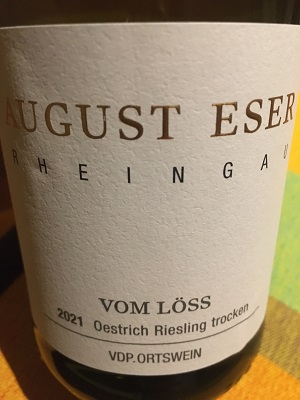
Rheingau, Germany: OESTRICH RIESLING VOM LOSS 2021 August Eser ***STAR BUY***
£13.95 The Wine Society
Fragrant dry Riesling with juicy zesty fruits, slight prickle, some rich fruit weight on the palate and clean zippy finish; moderate alcohol at 11.5%.
Wachau, Austria: GNEISS & LOSS GRUNER VELTLINER 2021 Domaine Wachau
£9.95 The Wine Society
Clean crisp incisive with light spice notes and very peppery finish – light very dry and zippy – with moderate alcohol at 11.5%.
Wagram, Austria: VON DEN TERRASSEN GRUNER VELTLINER 2020 Josef Ehmoser
£12.50 Field & Fawcett; St Andrews Wine; Fine Wine Musselburgh; Hedonism Wine
Well-priced example of Gruner Veltliner grown on loess terraces near Grossweikersdorf in the Danube valley: vibrant juicy fruit, rich in extract and weight.
RED
Szekszard, Hungary: BONSAI KADARKA 2020 Peter Vida
£16.50 The Wine Society
Complex refined example of Kadarka from Vida’s gnarled 100 year old vines which look like bonsai trees. Crunchy cranberry, raspberry notes with light spice and herbs.

Szekszard, Hungary: MOZAIK BIKAVER 2019 Sebestyen ***STAR BUY***
£13.50 The Wine Society
Loved this lightly oaked elegant Kekfrankos-dominated bikaver from brother and sister Csaba and Csilla Sebestyen with its pale colour, light cherry fruits and soft tannins.
Walla Walla, Washington State US: LEONETTI MERLOT 2018
£82 Ally Wines
Exquisitely floral with plums, cedar and spice, beautifully fine tannins from 100% Merlot grown on loess.
Join Rose’s wine tastings in Edinburgh, Glasgow & St Andrews www.rosemurraybrown.com
wine tastings
The perfect gift for the wine enthusiast in the family. Rose does In-person tastings too.
cellar advice
Rose does cellar valuations for private clients, valuations for insurers & bespoke portfolio management.
Related stories
March 31, 2024
By Rose Murray Brown MW Published in The Scotsman 30 March 2024 On 2 February 1659, the first wine made from grapes grown in South Africa was crafted by the Governor of the Cape, Jan van Riebeeck. He had planted vines four years earlier in the Company’s Garden near Cape Town from cuttings imported from France. Van Riebeeck’s first
March 24, 2024
By Rose Murray Brown MW Published in The Scotsman 16 March 2024 Heatwaves and bushfires were very much on the agenda when I visited Chile last month as winemakers prepared for their 2024 harvest in blistering heat and drought, with a plume of smoke from the devastating fires lingering over coastal hills. Heat and drought are the greatest challenges
March 23, 2024
By Rose Murray Brown MW Published in The Scotsman 9 March 2024 I have two glasses of Malbec in my hands from the same high-altitude vineyard in Uco valley in Argentina. I am in the Catena Institute of Wine in Mendoza with winemaker Agustin Silva. He has asked me to taste the two wines, both from the 1500m high



